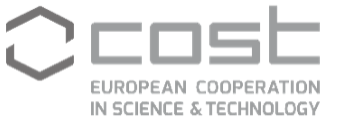WG2: Case studies and performance data (M1 to M48)
Leader : Diana Salciarini (IT)
Co-leader : Giorgia Dalla Santa (IT)
Understand how EGS interact with the ground, the energy supply system and the users is essential. In order to do that it is important to obtain feedback from real cases to improve analysis and design practice. One of the barriers to practical implementation is the lack of high-quality data pertaining to successful schemes. Real project data is an ideal means to allow the transfer of knowledge from countries where EGS have been developed to regions where development is still in its infancy. Therefore, WG2 activities are focused on learning from existing projects and allowing those lessons learned to be applied to improve future projects.
The objectives of WG2, leading to the tasks described below, are:
- Compile a list and associated database of operation EGS where performance data can be shared in the form of fact sheets and lessons learnt;
- Identify upcoming sites with potential for EGS and make recommendations about how they can be monitored to ensure ongoing future learning and knowledge transfer.
Previous work has identified a number of operational systems across the world. Here, the first objective is to collect all available information on these real applications and use them to learn, imporve or plan the next ones in the coming years. The list of real systems (Deliverable D2-1), must also specify if they were trial or fully operational, and what opportunities exist for gathering data during the lifetime of the Action and beyond.
Based on task (T2-1) operational systems with the potential for acquisition of operational monitoring data will be identified . Some case studies have already been identified by the proposers: the IEA Annex 52 case studies involving energy piles, a building basement in Italy that includes a diaphragm wall used as a heat exchanger, London Bulgari Hotel diaphragm wall, Oxford Keble College piled wall, experimental energy wall system prototype (GeothermSkin) in the 3-storey Energy Center Lab building in the campus of an Italian University, energy tunnel segmental lining experimental facility (Enertun prototype) made up of two complete rings equipped with heat exchangers at both the intrados and extrados sides in the Torino Metro Line tunnel.
It will be important to gather data concerning both design and construction choices, decisive conditions which led to the implementation, as well as the long-term performance (including temperature changes and seasonal performance). As all schemes will differ in nature, a consistent set of system boundary conditions for these tasks will be used, chosen from the IEA Annex. This data will allow understanding the differences in performance with respect to traditional borehole ground heat exchangers, or gas boiler installations. The final goal is to collect the lessons learnt from the different cases, understand what makes an application successful, including planning, design, construction and operation. This information will be summarised in short case study fact sheets (D2-2), performance information (D2-3) and key lessons learnt (D2-4).
The results of task (T2-1 and 2) will be used to inform future or under progress installation schemes where it is still possible to implement future instrumentation and monitoring programs. Possible sites for future monitoring identified at this stage include piles at the Emergency Hospital Oradea in Romania and Grand Paris Metro Station. Further opportunities for future cases will be developed with the Action members. Learning from implemented schemes in (T2-2), recommendations for monitoring in the future schemes will also be developed and summarised in a short report (D2-5).
Deliverables WG2
- D2.1 - List of constructed schemes ( 12 month )
- D2.2 - Case study fact sheets on specific sites ( 24 month )
- D2.3 - Summary of performance of EGS and comparison to other GHE ( 36 month )
- D2.4 - Recommendations for monitoring scheme for future projects( 36 month )
- D2.5 - Summary of lessons learnt ( 48 month )


